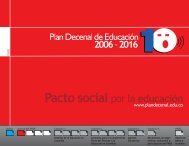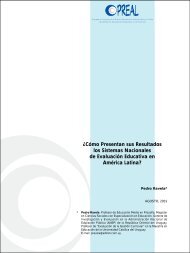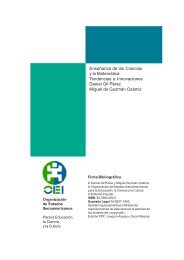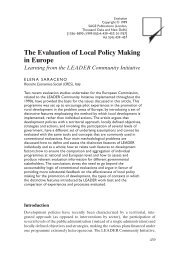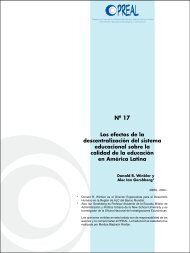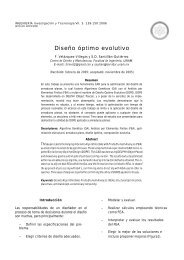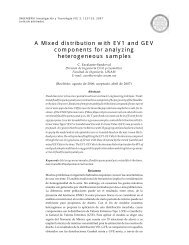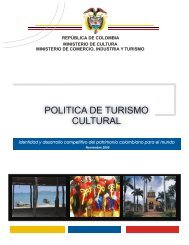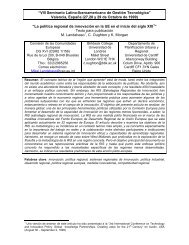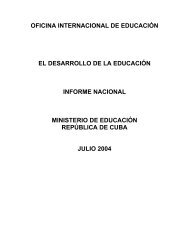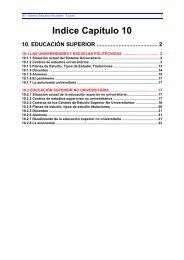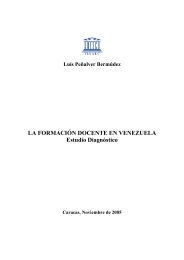Science education policy-making: eleven emerging issues; 2008 - OEI
Science education policy-making: eleven emerging issues; 2008 - OEI
Science education policy-making: eleven emerging issues; 2008 - OEI
Create successful ePaper yourself
Turn your PDF publications into a flip-book with our unique Google optimized e-Paper software.
the secondary years the role of S&T in the students’ worlds outside of school should play a<br />
powerful motivating role.<br />
Paralleling these curricular decisions about interest and science, practices that inform<br />
students and their parents about the exciting prospects of science–based careers need<br />
to be developed in school and among the wider public.<br />
Prospects<br />
More students will develop an interest in science, and more will consider scientifi c and<br />
technological careers.<br />
Pre-requisites<br />
Pre-service science teacher <strong>education</strong> should begin to remedy its students’ lack of<br />
stories of science. Professional development of S&T teachers should give priority to<br />
how real world contexts can be used in their teaching to optimise cognitive and affective<br />
learning outcomes.<br />
Formative and summative assessment modes that encourage affect-including cognition<br />
of science and technology will need to be developed.<br />
ISSUE D: HOW TECHNOLOGY RELATES<br />
TO SCIENCE IN EDUCATION<br />
Background<br />
In keeping with earlier UNESCO/ICASE recognition in 1994 of the importance in society<br />
of the link between science and technology, the Perth Declaration reiterates their interrelatedness.<br />
This is an important corrective to the separation between science and<br />
technology in schooling that occurred in a number of national curricula that appeared<br />
in the 1990s. In these curricula, the title, Technology, was used to give new recognition<br />
was to design, problem solving and <strong>making</strong>, that had been practical features of subjects<br />
like Craft and Design, Woodwork, Metalwork, Home Economics, Industrial Arts ,etc.<br />
Already, the potential that computers had to transform these hands-on subjects more<br />
than justified that these practical features should appear as a new key Learning Area.<br />
In this sense, the new subject, Technology was quite a separate field from <strong>Science</strong> and<br />
science teachers are not usually its teachers. The common use of the term, technology,<br />
as applications of <strong>Science</strong>, does however, very properly belong within the area of science<br />
teachers. In this document, this is essentially what is meant by ‘science and technology<br />
<strong>education</strong>’.<br />
Entitling this new subject with the word, “Technology” was, however, quite disastrous<br />
for the developments that had become to appear in science <strong>education</strong>. In the later<br />
1980s innovative science educators were developing materials that enabled science<br />
teachers to include applications of science in the form of technologies in their teaching.<br />
Projects, such as <strong>Science</strong> and Technology in Society (SATIS), PLON (for physics),<br />
22



